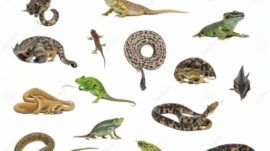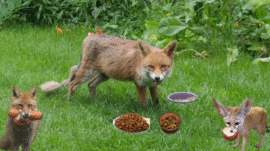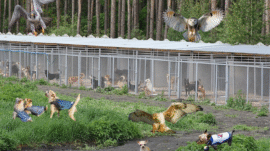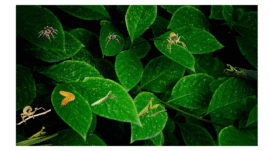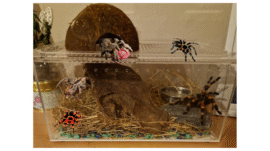Worms or Parasites That Can Make Your Reptile Sick. This leads to the growth of parasites such as nematodes, cestodes, trematodes, and protozoa in reptiles. Nematodes cause weight loss and affect the gastrointestinal system; The uterus or lungs may ...
The Best Diet for a Pet Raccoon
Exotic pet Raccoons make very interesting pets. They are curious, mischievous, playful, and get into everything. Exotic Pet raccoons eat quite a variety of foods. There are no formulated raccoon-specific diets but there are pre-made omnivore diets r ...
Feed For Your Pet Fox
The fennec fox (Vulpes zerda) is a popular pet fox. Choose the Best Feed for Your Pet Fox. People in the U.S. breed them, and they cost a few thousand dollars. Fennec foxes are small, live a long time, and have a gentle personality, making them grea ...
Protect Pets From Birds of Prey
Protect your pets from birds of prey by keeping them safe indoors or supervised outside. This is because hawks, eagles and owls are capable of killing small sized animals including cats, dogs, and rabbits. People know these birds for their well-deve ...
Insects and Spiders Pets Guide for Beginners
Insects and spider pets can be a good choice for anyone thinking of having a pet. Embark on a fascinating journey into the fascinating world of insects and spiders! Insects and Spiders Pets Guide for Beginners is for people who want to learn about i ...
Mexican Red-Knee-Tarantula Care
A Mexican Red-Knee-Tarantula needs gentle care. There are two species: Brachypelma hamorii and Brachypelma smithi. Both species have bright reddish-orange "knees" that stand out against their black bodies. Consequently, their vibrant coloration make ...
Land and Sea Exotic Pets
The land and see exotic pets have universally agreed definition of an exotic pet. In the past, this term has referred to wild species of animals captured alive. The land and sea exotic pets are special animals kept as companions. Land pets include r ...
Exotic petting zoo
An Exotic petting zoo is a simple three words. Zoos are places where people keep live exotic animals. They are open to the public. Visitors come to see the animals. Zoos are for education, fun, and cultural experiences. They are fixed locations. The ...
Bow Champs Exotic Petting Zoo
Bow Champs Exotic Petting Zoo is something that one will always remember most, especially those with children. The attractions are active whereby the visitors can come into contact with exotic animals from different parts of the world. The environme ...
Bay area exotic pets
Welcome to Bay Area Exotic Pets! They bring special animals right to your home. You can find reptiles, birds, and small mammals with them. If you want a bright parrot or a rare lizard, they have it. Their team helps you pick the best pet. In 2012 ...

